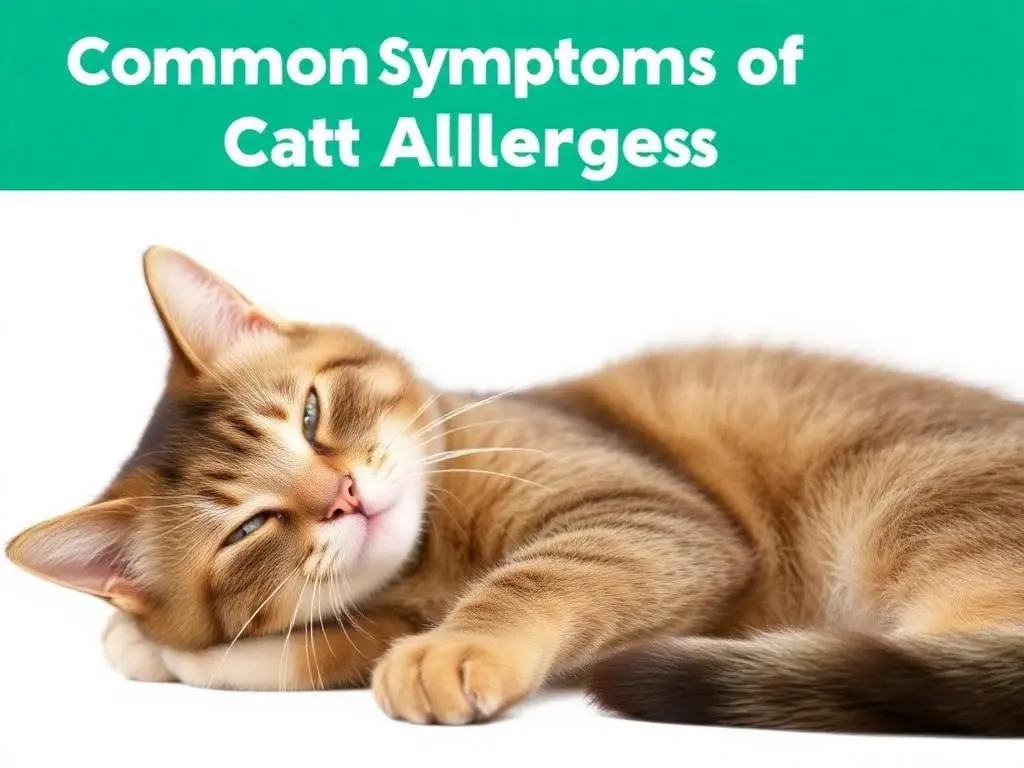OPEN

Cat Allergies Symptoms: How to Identify and Manage Them
Cat allergies are a common concern for pet owners and those who spend time around cats. Understanding the symptoms of cat allergies can help you identify the condition early and take steps to manage it effectively. This article explores the signs of cat allergies, their causes, and possible treatments to ensure a healthier living environment for both you and your feline companion.
What Causes Cat Allergies?
The primary cause of cat allergies is a protein called Fel d 1, which is found in cat saliva, skin cells, and dander. When a cat grooms itself, this protein becomes airborne and can trigger allergic reactions in sensitive individuals. Pet dander, hair, and dried skin flakes can linger on surfaces and in the air, leading to ongoing allergic reactions even without direct contact with the cat.
Other sources of allergens include cat urine and feces, which can also release allergens into the environment. These allergens can remain in the home for long periods, especially if proper cleaning and ventilation are not maintained. Cat allergens are lightweight and sticky, making them difficult to remove completely from fabrics, upholstery, and even walls.
Common Symptoms of Cat Allergies

Recognizing the symptoms of cat allergies can help you seek proper diagnosis and care. Common signs include:
- Sneezing and Runny Nose: Frequent sneezing, nasal congestion, and a runny nose are typical allergy responses. These symptoms are caused by the body’s immune system reacting to cat allergens, leading to inflammation in the nasal passages.
- Itchy or Watery Eyes: Red, irritated, and watery eyes often accompany exposure to cat allergens. This occurs due to histamine release, which causes eye inflammation and discomfort.
- Coughing and Wheezing: Respiratory issues, such as wheezing, coughing, and shortness of breath, can occur in severe cases. These symptoms may resemble asthma attacks and can be particularly concerning for those with pre-existing respiratory conditions.
- Skin Reactions: Some individuals may develop itchy skin, hives, or rashes after direct contact with a cat. These reactions are often due to direct skin contact with allergens from cat fur or saliva.
- Asthma Flare-Ups: People with asthma may experience increased severity in their symptoms when exposed to cat allergens. This can include chest tightness, difficulty breathing, and nighttime coughing.
Diagnosing Cat Allergies
If you suspect you have cat allergies, consulting a healthcare provider for proper diagnosis is essential. Diagnostic methods may include:
- Skin Prick Test: Small amounts of cat allergens are introduced into the skin to check for reactions. This test is commonly used to diagnose various allergies.
- Blood Test: Measures the immune system’s response to cat allergens by detecting specific antibodies. Blood tests can be useful for those who cannot undergo skin tests due to skin conditions or medications.
- Elimination Testing: Temporarily removing exposure to cats to see if symptoms improve can also help identify the cause of allergies.
Managing and Treating Cat Allergies

While cat allergies can be challenging, several strategies can help reduce symptoms:
- Use HEPA Filters: High-efficiency particulate air (HEPA) filters can help remove allergens from the air, reducing airborne dander and hair.
- Clean Regularly: Vacuum carpets, furniture, and curtains frequently to minimize dander buildup. Use a vacuum cleaner with a HEPA filter for better allergen control.
- Air Purifiers: Air purifiers can help trap airborne allergens and improve air quality, especially in bedrooms and common areas.
- Antihistamines: Over-the-counter antihistamines can relieve mild allergy symptoms by blocking histamine release.
- Nasal Corticosteroids: Nasal sprays can reduce inflammation in the nasal passages, helping to alleviate congestion and sneezing.
- Immunotherapy: Allergy shots (immunotherapy) can help reduce sensitivity to cat allergens over time, often providing long-term relief.
- Create Cat-Free Zones: Designate certain areas of your home as cat-free, such as bedrooms, to reduce allergen exposure in spaces where you spend significant time.
Can You Prevent Cat Allergies?
Preventing cat allergies entirely may not be possible, but there are ways to reduce the risk:
- Adopt Hypoallergenic Breeds: Some cat breeds produce lower levels of Fel d 1, such as the Siberian, Balinese, and Devon Rex.
- Maintain Good Grooming: Regularly grooming your cat can reduce dander and loose hair in your home. Brushing your cat outside can help minimize indoor allergens.
- Bathing Your Cat: Occasionally bathing your cat with vet-approved products can help lower allergen levels. However, frequent bathing may dry out your cat’s skin, so consult your vet for advice.
- Ventilate Your Home: Proper ventilation and air circulation can help reduce allergen buildup indoors.
When to See a Doctor
If you experience persistent or severe allergic reactions, it’s important to seek medical attention. Untreated cat allergies can lead to chronic respiratory issues or worsen asthma symptoms. A healthcare provider can recommend appropriate medications or therapies based on the severity of your symptoms.
Conclusion
Understanding cat allergy symptoms and their causes can empower you to take proactive steps for a healthier lifestyle. By managing exposure to allergens and exploring treatment options, you can enjoy a comfortable environment while sharing your home with a beloved feline friend. Remember, while cat allergies can be challenging, proper care, regular cleaning, and medical guidance can make a significant difference in your quality of life.
